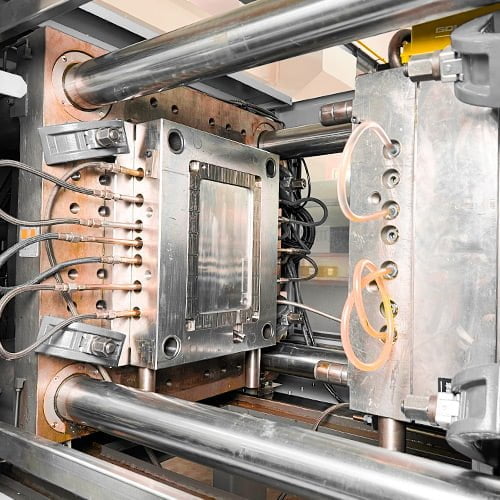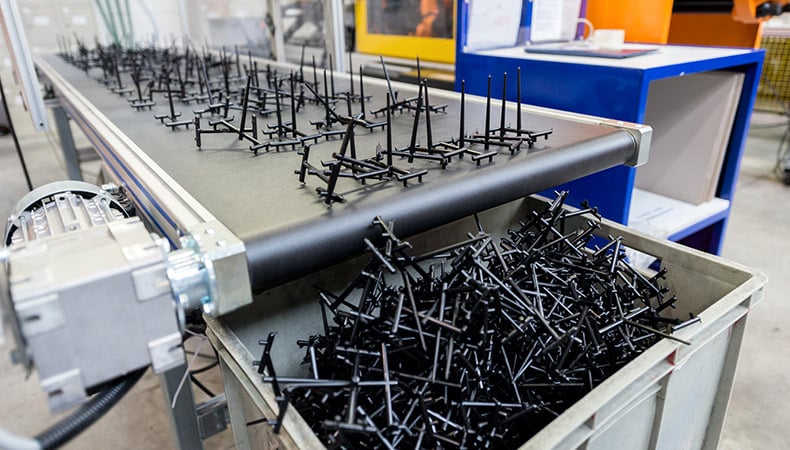Plastic Injection Molding: A Comprehensive Overview to Modern Manufacturing Techniques
Plastic Injection Molding: A Comprehensive Overview to Modern Manufacturing Techniques
Blog Article
The Future of Plastic Shot Molding: Technologies and fads to Watch
As the plastic injection molding sector advances, several essential patterns are arising that assurance to improve its landscape. Automation and smart manufacturing methods are readied to improve performance, while the change in the direction of lasting materials reflects a growing environmental consciousness. Additionally, improvements in 3D printing are leading the way for extraordinary layout adaptability. These technologies additionally bring forth obstacles that call for cautious consideration. Comprehending how these elements will certainly connect and affect future methods is important for stakeholders wanting to navigate this transformative duration properly.
Automation and Smart Manufacturing
As the plastic injection molding market develops, automation and smart production are taking center stage, revolutionizing manufacturing processes - Plastic Injection Molding. The assimilation of sophisticated technologies such as robotics, IoT (Net of Things), and artificial knowledge is enabling suppliers to improve efficiency, minimize operational expenses, and improve product top quality. Automated systems improve operations, lessening manual intervention and increasing throughput, which is crucial in meeting the increasing need for fast manufacturing cycles
Smart manufacturing modern technologies facilitate real-time tracking and information analysis, permitting companies to enhance equipment performance and anticipate upkeep needs. This positive strategy not only lessens downtime yet also prolongs the life-span of equipment. Additionally, the usage of collaborative robots, or cobots, boosts the flexibility of assembly line, allowing employees and machines to run alongside safely and efficiently.
The adoption of automation in plastic injection molding is not merely a pattern however a calculated essential for companies aiming to stay competitive in a worldwide market. By utilizing these innovations, makers can accomplish greater precision, minimize waste, and adapt swiftly to changing customer needs, placing themselves for lasting development in a progressively automatic future.
Lasting Materials and Practices
The push towards automation and clever production has actually led the way for a greater emphasis on lasting products and methods within the plastic injection molding industry. Companies are significantly looking for environment-friendly options to conventional petroleum-based plastics, resulting in the adoption of recycled and bio-based products. These sustainable materials not just minimize environmental impact yet likewise align with consumer need for greener products.

Moreover, collaboration in between suppliers, product distributors, and ecological companies is cultivating innovation in the development of lasting products that fulfill efficiency criteria without endangering top quality. As laws around plastic use come to be stricter, the market is poised to adapt by embracing these lasting strategies, making certain lasting feasibility and minimizing reliance on non-renewable resources. The integration of sustainability right into plastic shot molding is not simply a pattern; it is becoming an important component of company obligation and operational excellence.
Breakthroughs in 3D Printing
Current developments in 3D important source printing technology are significantly changing the landscape of plastic injection molding. As soon as difficult or impossible to achieve via conventional methods, the assimilation of additive manufacturing procedures allows for the quick prototyping of complex geometries that were. This capacity not only increases product growth cycles but additionally decreases product waste, lining up with the expanding demand for lasting manufacturing methods
Moreover, the introduction of crossbreed manufacturing strategies, which combine 3D printing and shot molding, supplies producers the capacity to create complex designs while preserving the performance of automation. This technique makes it possible for the production of personalized components tailored to particular consumer requirements without compromising the rate and scalability that shot molding provides.
Furthermore, innovations in products, such as high-performance polymers and composites particularly created for 3D printing, are boosting the functional abilities of printed parts. These products can withstand greater anxiety and show boosted thermal residential or commercial properties, making them appropriate for more demanding applications.
As 3D why not find out more printing continues to progress, its integration right into plastic injection molding processes guarantees to improve efficiency, lower costs, and foster development in product design, positioning producers to better satisfy the difficulties of an affordable market.
Information Analytics and IoT Combination
Information analytics and the combination of the Web of Things (IoT) are reinventing plastic injection molding by offering makers with unmatched insights into their operations. By leveraging real-time information accumulated from interconnected equipments and sensing units, makers can keep an eye on performance metrics, identify inefficiencies, and optimize manufacturing procedures. This data-driven technique facilitates predictive upkeep, lowering downtime and prolonging devices lifespan.
Furthermore, IoT assimilation permits improved quality control. By continuously tracking variables such as temperature level, stress, and cycle times, suppliers can quickly spot deviations from developed specifications and make adjustments in actual time. This not only boosts product uniformity however also lowers waste and scrap rates.
The blend of data analytics and IoT technologies likewise empowers makers to adopt even more agile manufacturing strategies. With accessibility to comprehensive information analytics, organizations can react to market needs with greater adaptability, adjusting manufacturing schedules and setups as required. This adaptability is crucial in a rapidly altering production landscape.

Customization and Design Flexibility
Exactly how can personalization and style versatility boost the competition of plastic shot molding? In a significantly varied market, the capability to use customized options is vital. Modification permits makers to satisfy certain customer requirements, fitting distinct dimensions, shapes, and capabilities that typical items might not meet. This versatility not only fosters customer commitment however also try these out opens up methods for brand-new company opportunities throughout numerous markets, from automobile to consumer items.
Developments in design innovations, such as computer-aided design (CAD) and quick prototyping, additional bolster this pattern. These tools allow designers to develop elaborate patterns and intricate geometries, which can be perfectly incorporated into the production process. Because of this, makers can respond quickly to altering consumer choices and market demands.
In addition, the implementation of modular tooling systems boosts design versatility, permitting quicker modifications in between different product layouts without comprehensive downtime. This flexibility can lead to minimized preparations and lower production expenses, making firms much more competitive and active. Inevitably, embracing personalization and layout adaptability in plastic injection molding not only raises item offerings yet also enhances market positioning in an ever-evolving landscape.
Final Thought
The future of plastic shot molding is characterized by significant developments in automation, sustainable practices, and innovative materials. The combination of IoT and information analytics will certainly boost functional efficiency and predictive maintenance. The fostering of recycled and bio-based products, along with progression in 3D printing, will certainly cultivate sustainability within the sector. Modification via modular tooling and quick prototyping will certainly allow makers to continue to be responsive and competitive to the dynamic demands of the marketplace.

The future of plastic shot molding is characterized by significant improvements in automation, lasting techniques, and innovative materials.
Report this page